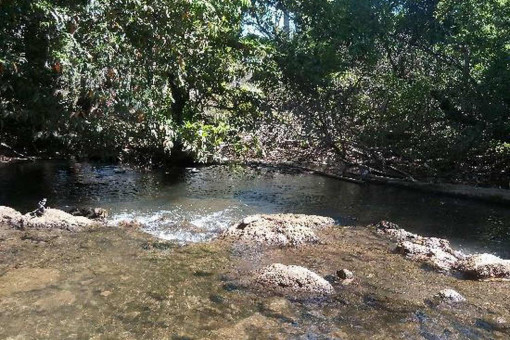Costly cleanup was ineffective, contamination remains high, villagers say
PUBLISHED : 16 Jan 2024 at 17:27

KANCHANABURI: Long-suffering residents of Klity Creek affected by lead pollution in Thong Pha Phum district are stepping up pressure on the Pollution Control Department (PCD) to get rid of the remaining toxic sediment.
The villagers have petitioned provincial authorities, demanding a more effective solution. They said more than 800,000 tonnes of toxic sediment remain in their community despite the PCD’s much-touted rehabilitation programme.
If this polluted sediment was not removed for proper disposal it would continue contaminating the creek and remain a health and environmental hazard for the community, they said.
According to the villagers, the concentration of lead had fallen to 4,000-5,000 milligrammes per kilogramme (mg/kg) by the end of the PCD’s cleanup. But a year later it had risen to 10,000-20,000 mg/kg, according to a survey that to assessed the effectiveness of the decontamination programme.
“This means that toxic sediment upstream is being washed downstream, so we want the PCD to get rid of this sediment and rehabilitate the environment as quickly as possible,” local resident Sathaporn Thongphaphumpattawee said.
The PCD was ordered by the Supreme Administrative Court in January 2013 to clean up a 12-kilometre stretch of the creek that was polluted by hundreds of tonnes of lead discharged from a plant owned by Lead Concentrates (Thailand), which was closed down in 1998.
The case was first filed in 2004 by 22 residents of Klity village affected by lead contamination caused by mining operations upstream. The department was said to have spent at least 700 million baht on its rehabilitation programme from 2017 to 2022, but its cleanup efforts have been criticised as inadequate.
Surapong Kongchantuk, a human rights lawyer following the case, said the PCD did not get rid of the toxic sediment, which required its removal to a special facility to be disposed of.
He said the department went only so far as to have the lead-contaminated sediment “relocated and buried” in forests upstream, and the amount of buried sediment was less than 1% of the total.
He expressed concern that unless the sediment is properly disposed of, lead-contaminated water will cause more damage to people’s health and the environment as the water from the creek runs downstream into the Mae Klong river, a major water source for Kanchanaburi and Bangkok, and eventually into the Gulf of Thailand.
Siwakorn Wichianpreuat, director of Kanchanaburi’s environment office, said the PCD will be asked to clarify its rehabilitation programme and the department’s response is expected in two weeks.
“Based on the petition, the toxic sediment remains despite the court-ordered cleanup and rehabilitation. The PCD will be asked to explain what it has done so far,” he said.

